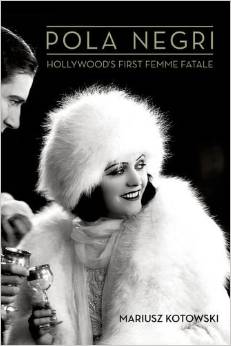Pola Negri: Hollywood’s First Femme Fatale
Certain stars are known for their larger-than-life personas and Pola Negri is no exception. From her lavish lifestyle of fashion and jewels, her romances with Charlie Chaplin and Rudolph Valentino, to the lore of walking her pet cheetah down Hollywood Blvd, Pola Negri helped define the "anything goes" ethos of the Jazz Age of the 1920s.
Negri (1897-1987) rose from an impoverished childhood in Warsaw, Poland, to become one of early Hollywood’s greatest stars. After tuberculosis ended her career as a ballerina in 1912, she turned to acting and worked under legendary directors Max Reinhardt and Ernst Lubitsch in Germany. Negri preceded Lubitsch to Hollywood, where she quickly became a fan favorite thanks to her beauty, talent, and diva personality. Known for her alluring sexuality and biting artistic edge, she starred in more than sixty films and defined the image of the cinematic femme fatale.
At the height of her fame, Negri often portrayed exotic and mysterious temptresses, headlining in such successes as The Spanish Dancer (1923) and Forbidden Paradise (1924) before returning to Europe in the 1930s. The devastating effects of World War II soon drove her back to the United States, where she starred in Hi Diddle Diddle (1943) and pursued a vaudeville career. She made her final screen appearance in Walt Disney’s 1964 romantic mystery, The Moonspinners, opposite Hayley Mills, Peter McEnery and Eli Wallach.
In this engaging study, Kotowski not only tells the story of Negri’s life and career, but also explores the link between Hollywood and European cinema in the years between the two World Wars.
Marius Zotowski is the chief executive officer of Bright Shining City Productions, a film production company.


